Background: MiCA Reshapes Europe’s Stablecoin Ecosystem
The full implementation of the European Union’s Markets in Crypto-Assets (MiCA) regulation marks the advent of the world’s first regional crypto asset regulatory framework. MiCA strictly categorizes stablecoins into electronic money tokens (EMT) and asset-referenced tokens (ART), requiring all stablecoins operating in the EU to meet conditions such as 1:1 reserve custody, periodic transparency reports, and issuance by an EU-authorized institution.
In this context, Circle’s euro stablecoin EURC became the first global stablecoin to receive MiCA compliance certification, and Aave, as a leading DeFi lending platform, was the first to announce its integration of EURC, signaling a strategic shift from a dollar-dominated market to diversified euro stablecoins.
This move not only responds to regulatory trends but also accurately captures European market demand. Data shows that in Q1 2025, euro stablecoin trading volume surged 10-fold with a daily peak exceeding $70 million, and EURC captured 50% market share, reflecting the urgent demand among European institutions and individuals for a compliant euro stablecoin.

Strategic Logic: Triple Drivers of Compliance, Liquidity, and Market Opportunity
Compliance Breakthrough: MiCA requires stablecoin issuers to register as either electronic money institutions (EMI) or credit institutions (CI) and to have reserve assets custodially held by an EU-authorized entity. EURC passed the EMI licensing review by the French financial regulator (ACPR); its reserves are custodied by Société Générale and regularly audited by a third party, fully meeting MiCA requirements. In contrast, USDT, which has not disclosed its reserve custody, may face delisting risks on EU exchanges in Q2 2025.
Aave’s choice to integrate EURC essentially builds a “regulatory-friendly” asset pool that minimizes the risk of liquidity disruption caused by non-compliant stablecoins. For instance, in 2024, several exchanges delisted non-compliant stablecoins under MiCA transitional provisions, leading to a 40% shrinkage in total value locked (TVL) in affected lending pools.
Liquidity Restructuring: The introduction of EURC is expected to activate European local capital inflows into the DeFi market. Traditional financial institutions such as Germany’s DZ Bank have already launched compliant euro stablecoin products and are collaborating with Aave to develop “institution-grade lending pools” that allow corporate users to use euro stablecoins as collateral. This model not only reduces cross-border financing costs but also uses smart contracts to automatically adjust interest rates, offering annual yields 3-5 times higher than traditional bank loans.
Geoeconomic Competition: The European Central Bank is accelerating the development of a Digital Euro to counter the global dominance of dollar-pegged stablecoins. Aave’s integration of EURC can be seen as synergistic with the ECB’s strategy—connecting the digital euro with on-chain financial instruments (such as interest rate derivatives and RWA tokens) through its DeFi protocol, thereby constructing a “digital financial moat” for the Eurozone.
Technical Implementation: Compliance-Driven Smart Contract Upgrades
Aave V3 has implemented three key upgrades for EURC integration:
- Reserve Isolation Mechanism: The reserve assets of the EURC lending pool are kept separate from other stablecoin pools. An on-chain oracle continuously verifies the reserve balance to ensure a 1:1 peg.
- KYC/AML Module: In partnership with a compliant identity verification platform, on-chain KYC checks are performed for large lending users exceeding €100,000, in line with EU anti-money laundering regulations.
- Dynamic Interest Rate Model: Incorporates the European Central Bank’s benchmark rate (ECB Rate) as a parameter; when the benchmark rate rises, deposit rates automatically increase to attract institutional capital.
These modifications have enabled Aave to become the first DeFi protocol to pass the MiCA “regulatory sandbox” tests, laying the foundation for expanding its client base to European traditional financial institutions.
Market Impact and Competitive Landscape
- DeFi Protocol Differentiation: Compliance capability is becoming the core competitive strength for DeFi platforms. Major protocols like Uniswap and Compound have already initiated similar compliance upgrades, while smaller protocols may exit the EU market due to high technical costs. Data indicates that in Q1 2025, the number of DeFi protocols in the EU decreased by 23%, yet TVL increased by 58%, demonstrating a trend toward “head concentration.”
- Stablecoin Landscape Restructuring: The rise of EURC is diverting market share from USDT. Exchanges such as OKX and Kraken have set EURC as the default trading pair in the Eurozone, with its trading volume share jumping from 12% in 2024 to 41% in 2025. If USDT fails to pass MiCA transitional reviews, EURC may replace it as the stablecoin of choice in Europe.
- Traditional Finance and DeFi Integration: European commercial banks are using Aave’s institutional interface to convert corporate deposits into EURC and invest in high-yield lending pools. For example, Santander in Spain has launched a “DeFi Savings Account” with an annual yield of 4.5%, which is three times higher than traditional deposit products.
Challenges and Future Outlook
MiCA implementation details are still being refined, for instance, the classification of governance tokens for DeFi protocols under securities law remains unclear. If Aave’s token (AAVE) is classified as a security, it could trigger delisting and liquidity crises.
There is also the challenge of user habit migration. Although EURC has clear compliance advantages, USDT still holds 69% of the global stablecoin market share. Aave may need to accelerate user migration through yield incentives (such as liquidity mining rewards), with plans to launch a “EURC Deposit Double Points” campaign in Q2 2025.
Additionally, technical upgrade costs have led to a 15% increase in Aave’s protocol gas costs, potentially reducing its appeal compared to low-fee competitors like Morpho. Solutions include adopting a zk-Rollup Layer 2 scaling solution to lower transaction costs below $0.01.
Aave’s integration of EURC is not only a technical upgrade but also a milestone in the convergence of DeFi with mainstream financial systems. Driven by both compliance and globalization, euro stablecoins may become the key variable in restructuring the crypto asset market landscape.



